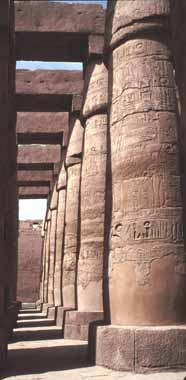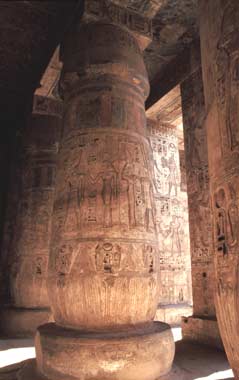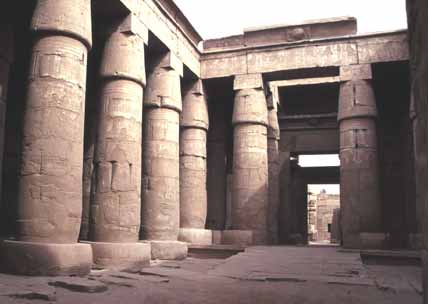|
Ancient
Egypt by Sjef Willockx |
||
|
This type of column was especially popular during the period of the 19th and 20th dynasty. In concord with a general loss of refinement during this period, in favor of simpler and bulkier lines, the design of the papyrus column was hugely simplified. Both the shaft and the capital now consisted of just one element. This is part of the great hypostyle of the Amun temple at Karnak. Building it was begun under Seti I, and completed under his son Ramesses II. A trace of the constriction at the bottom of the shaft is still visible. That even this simple column type can convey a certain elegance is proved in the mortuary temple of Ramesses III (20th dynasty) at Medinet Habu. Here, the curving of the shaft shows a deliberate tension. If you download the larger file, you can admire the pointed leaves at the lower end of the shaft. The base has curved sides: like a big Dutch cheese. If you ever visit Karnak, don't miss the Chonsu temple. Groups do not go there often, so it is usually quiet. And although much smaller then the Amun temple itself, it is very impressive for its completeness.
Here you see the first court, right behind the pylon.
You are looking towards the center of the temple. As you can see, the
next section (a hypostyle) lies a bit higher, beyond a low ramp. Back to start Previous Next Thumbnails
|
|
|
|
|
All materials on this site are protected by copyright. All copyright by Sjef Willockx, unless otherwise indicated. |


